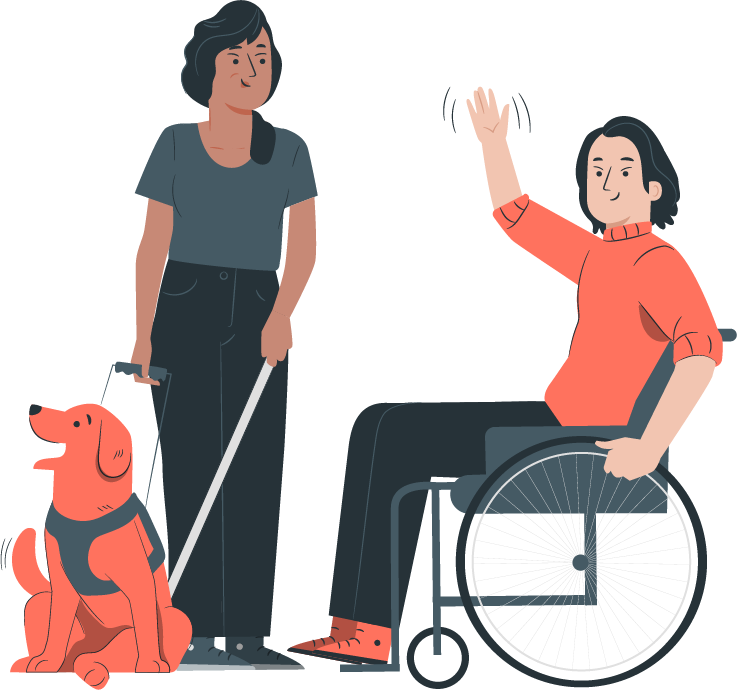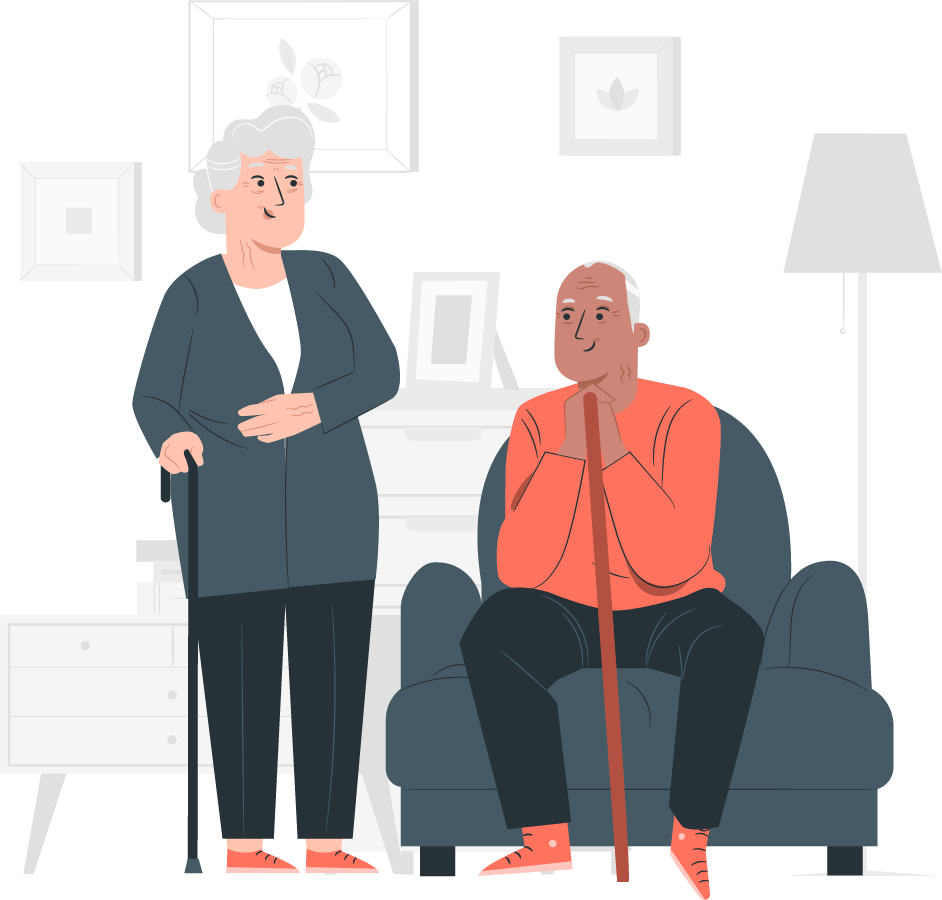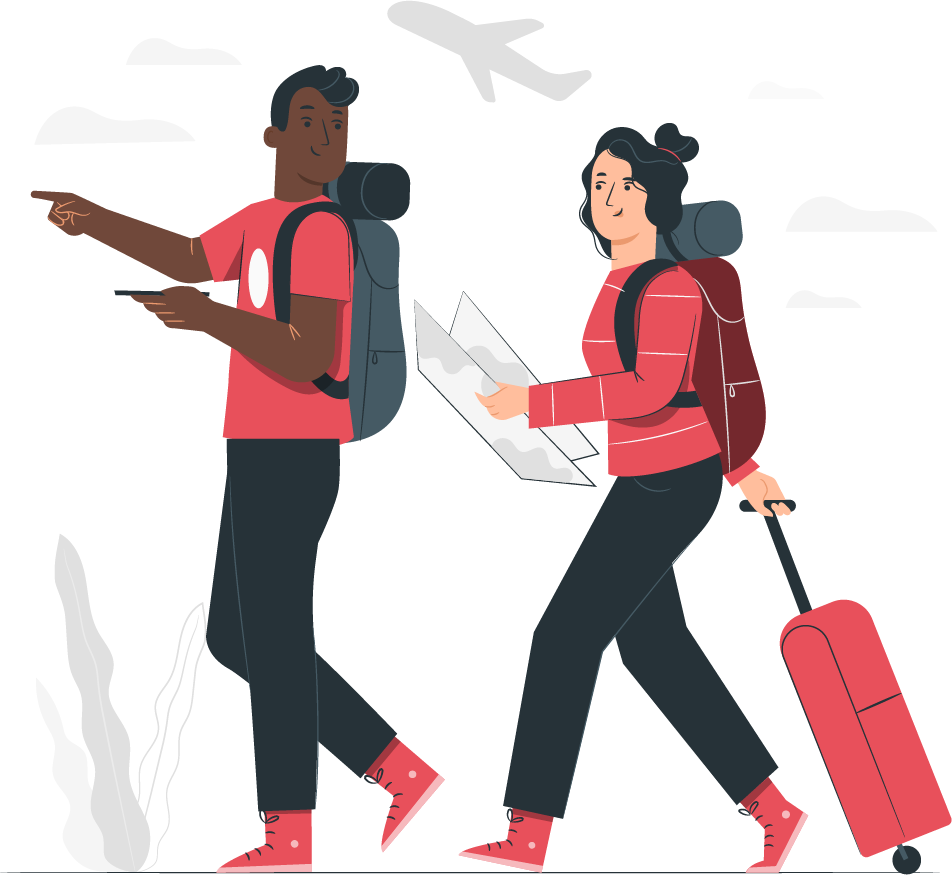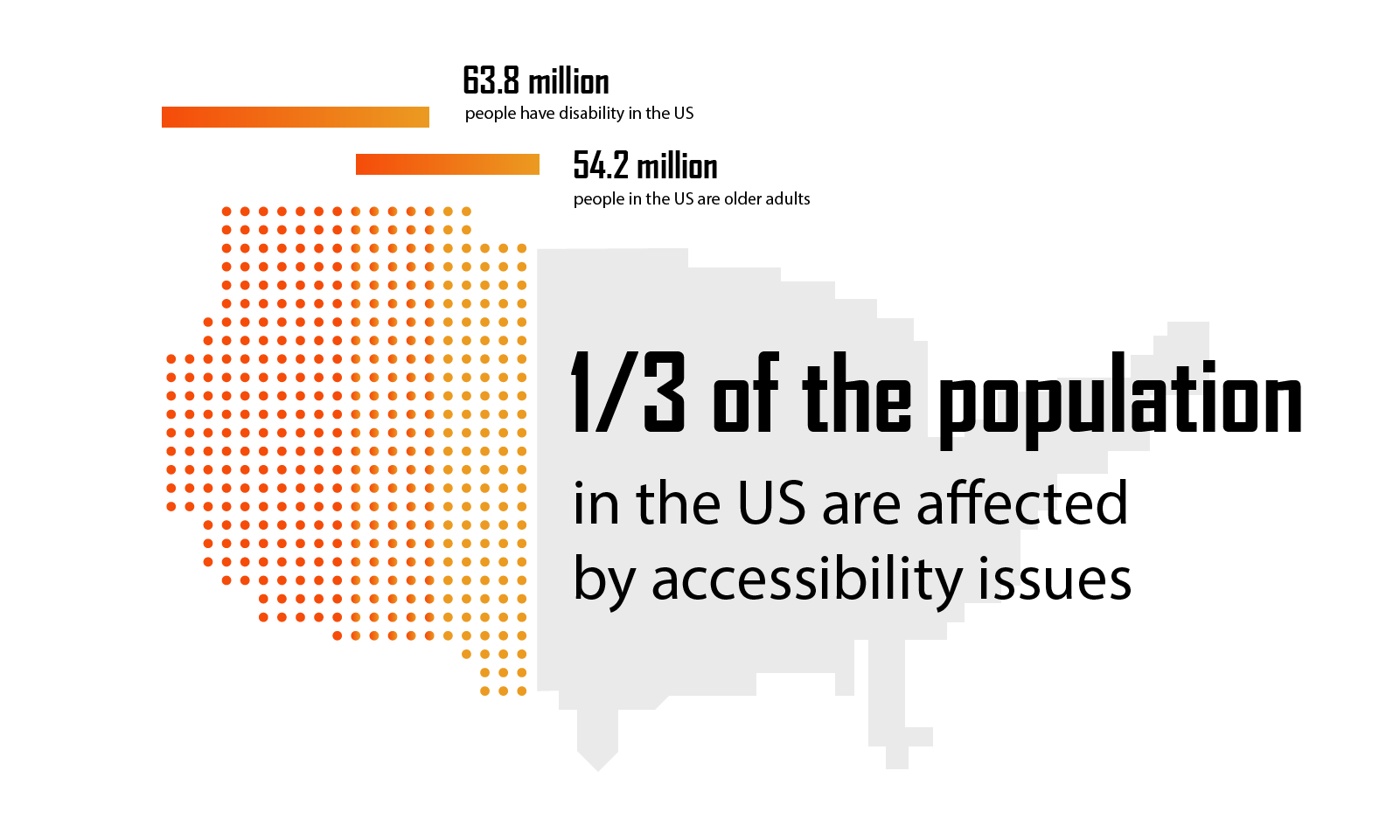


For people with disabilities
For older adults
For ourselves
61 million adults in the US live with disabilities, which means 1 out of 4 American adults are affected by accessibility issues. While you may not be disabled, your neighbors, co-workers and fellow community members may be and deserve to live as comfortably as you do.
Think about your parents or grandparents, who are getting older and might start to experience mobility challenges. It’s important to understand and be prepared to help them face the coming difficulties.
Accessibility benefits everyone in the community. Everyone ages, is at risk for an accident or disease that could impact mobility, and occasionally experiences temporary impairments that can cause similar difficulties. These might include wanting an elevator while using crutches, needing a curb cut while pushing a stroller, or requiring more time to cross a street with heavy bags.

 Learn more about accessibility →
Learn more about accessibility →


